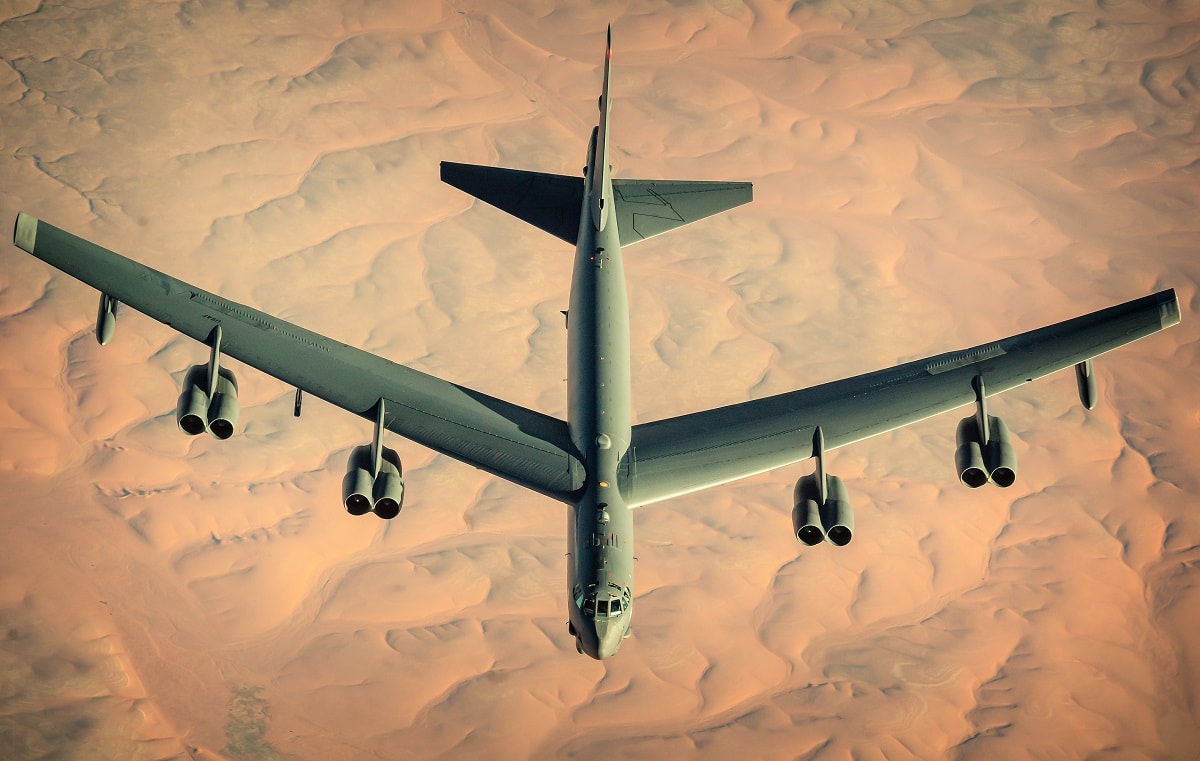For the first time in history, a U.S. Air Force B-52H bomber has arrived in Indonesia, a country in the South Pacific about 2,000 miles south of China and within strategic reach of the South China Sea, Taiwan, and other critical regions in the area.
While nearby Singapore is a longstanding U.S. ally and F-35 partner, there has been far less involvement between the U.S. and Indonesia, so the arrival of the B-52 improves the U.S. deterrence posture and signifies a step forward in a collaborative relationship between Indonesia and the U.S.
Indo-Pacific Presence
In an immediate sense, the arrival of the B-52s in Indonesia is a symbolic gesture to rival China by demonstrating that the U.S. is further solidifying and strengthening its coalition in the Pacific, aimed at containing, challenging, and counterbalancing China.
There are several key critical factors to consider with this action, as the U.S. Air Force’s upgraded B-52 is quite capable of bomber task force and security patrols throughout the Pacific theater. Indonesia is indeed a strategically advantageous location for the B-52 as it places the South China Sea and mainland China itself within reach of bombing sorties.
With a reported range of 8,800 miles, the B-52H easily has the combat radius to travel roughly 2,500 miles from Indonesia to the Chinese mainland. With its range, a B-52 would have sufficient endurance throughout key parts of the region without having to refuel. Launching and landing B-52s from Indonesia offers a tactical and strategic advantage to the U.S. and its South Asian allies as it is closer to mainland China and the South China Sea than Guam, which is roughly 3,000 miles from mainland China and much farther away from the South China Sea than Indonesia. Therefore, having B-52s occasionally operate from Indonesia offers the U.S. an expanded geographical and strategic window with which to hold China at risk and conduct Bomber Task Force patrols over sensitive areas such as the highly contested South China Sea.
B-52H in Guam & Indonesia
It is likely that the U.S. will operate B-52s from Indonesia in an unpredictable fashion, similar in strategy to how B-52 arrivals and patrols are conducted in Guam. This means B-52 arrivals or Bomber Task Force operations will not be aligned with a particular schedule or routine in order to preserve the possibility of surprise.
While the presence of B-52s is clearly significant, as Bomber Task Force patrols do demonstrate strength and resolve, there are certain limits to what it could accomplish in the Pacific. Much of the impact of this presence pertains to areas where it operates. For instance, B-52s would prove to be an impactful presence and demonstration of air power resolve and readiness throughout international air space in the Pacific, particularly over sensitive areas of the South China Sea where Chinese “island building” or weapons could be held at risk.
However, B-52s themselves would be quite challenged to conduct attack missions over mainland China in the event of major conflict, unless of course the U.S. and its allies were first able to securely establish air superiority. Should B-52s attempt to operate in contested airspace, the large, non-stealthy planes would be quite vulnerable to Chinese fighter jets as well as ground-based air defenses. The advantage though, is one of readiness.
B-52H patrols from multiple points of entry, dispersed across critical parts of the Pacific, certainly demonstrate U.S. resolve and preparedness to harness instruments of national power in the region.
Kris Osborn is the Military Affairs Editor of 19FortyFive and President of Warrior Maven – Center for Military Modernization. Osborn previously served at the Pentagon as a Highly Qualified Expert with the Office of the Assistant Secretary of the Army—Acquisition, Logistics & Technology. Osborn has also worked as an anchor and on-air military specialist at national TV networks. He has appeared as a guest military expert on Fox News, MSNBC, The Military Channel, and The History Channel. He also has a Masters Degree in Comparative Literature from Columbia University.
From 19FortyFive
Footage Shows World War I Guns Being Used in Ukraine
‘Vacuum Bombs Destroyed’: Ukraine Footage Shows Putin’s Thermobaric Rockets Destroyed
BOOM! Ukraine Video Shows Precision Strike on Russian Air-Defense System

